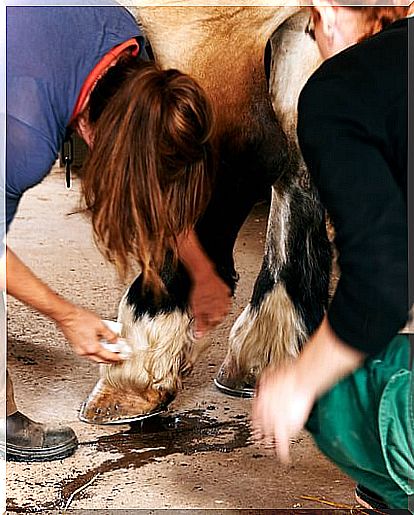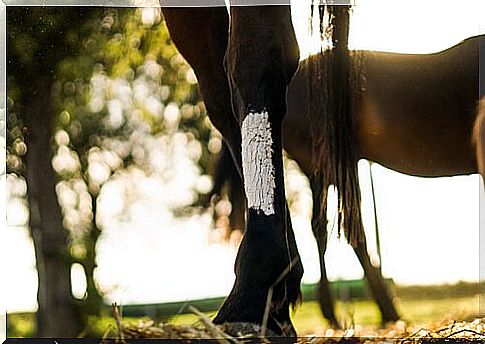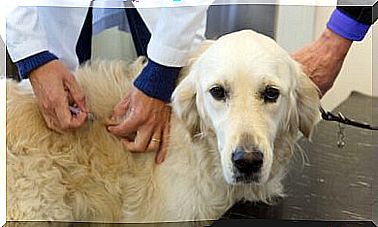Tetanus In Horses: Symptoms And Treatment

Tetanus in horses, although rare and easy to prevent, causes many deaths in horses. Learn more about this disease, its symptoms and ways to avoid it.
Although this disease affects many species, tetanus in this case deserves special attention. This is due to the sensitivity of this species to the toxins that produce the disease.
What is tetanus?
Tetanus is a disease caused by Clostridium tetani , an especially resistant bacterium whose spores remain active for up to 30 years.
This bacteria and its toxins are especially dangerous when they spread under the skin and through tissues. Therefore, in people, special care is taken with sharp metal objects.
This bacterium, which causes tetanus in horses and other species, can be found not only in oxidized objects. It can also appear in soil and soil, especially where there is organic matter.
In addition, it also appears normally in the gastrointestinal tract of many species, such as humans or horses. However, in this case it is not so dangerous.
Which species can be affected?
Tetanus is not a disease that only affects horses. All mammal species are at risk for it.
However, tetanus in horses is much more dangerous than in other species, as horses are much more susceptible to it.
Thus, the disease became one of the main ones affecting horses. In addition, and lthough is rare and easy to avoid, has claimed hundreds of victims.
And these victims were not just horses, but also other equines, such as donkeys or mules.

Despite being a more frequent disease in hot climates and hot months, its incidence in temperate climates and cold months is not so rare. As such, tetanus in horses is a year-round risk.
How do you get the disease?
The spores of this bacteria normally penetrate deep and contaminated wounds. As in humans, tetanus in horses is usually acquired through injuries.
These cuts can be caused by sharp and dirty objects such as nails.
Its origin can also come from veterinary negligence, such as castrations or injections with unsterilized material.
Furthermore, problems and complications during childbirth can also cause the illness.
Tetanus in horses is then developed in these wounds. Spores germinate and bacteria begin to proliferate. They, in turn, produce two exotoxins: tetanolysin and tetanospasmin.
What are the symptoms of tetanus in horses?
These toxins play an important role in disease symptoms in horses and other species. The tetanospasmin is known as a toxic neurotoxin that affects the peripheral nerves, causing uncontrollable muscle contractions.

Paralysis of the larynx can produce regurgitation, while other cases can lead to colic, one of the main diseases of the horse.
The horse ends up falling and cannot get up. In this way, you can end up dying of suffocation due to the paralysis of the muscles that allow breathing.
Is tetanus curable?
Tetanus in horses is easy to prevent through vaccination. If it is not known whether a horse has been vaccinated, it is vital to apply the vaccine as soon as possible.
The tetanus vaccine requires a second booster dose one month after the first and another after six months.
Thereafter, the dose should be boosted annually. Pregnant mares must also be vaccinated at least one month before parturition.
In case tetanus in horses occurs in an animal that is not vaccinated, the treatment may not be effective and it must be treated as an emergency.
In many cases, the vaccine does not take effect in time and the animal dies. Therefore, vaccination is the best form of prevention.









